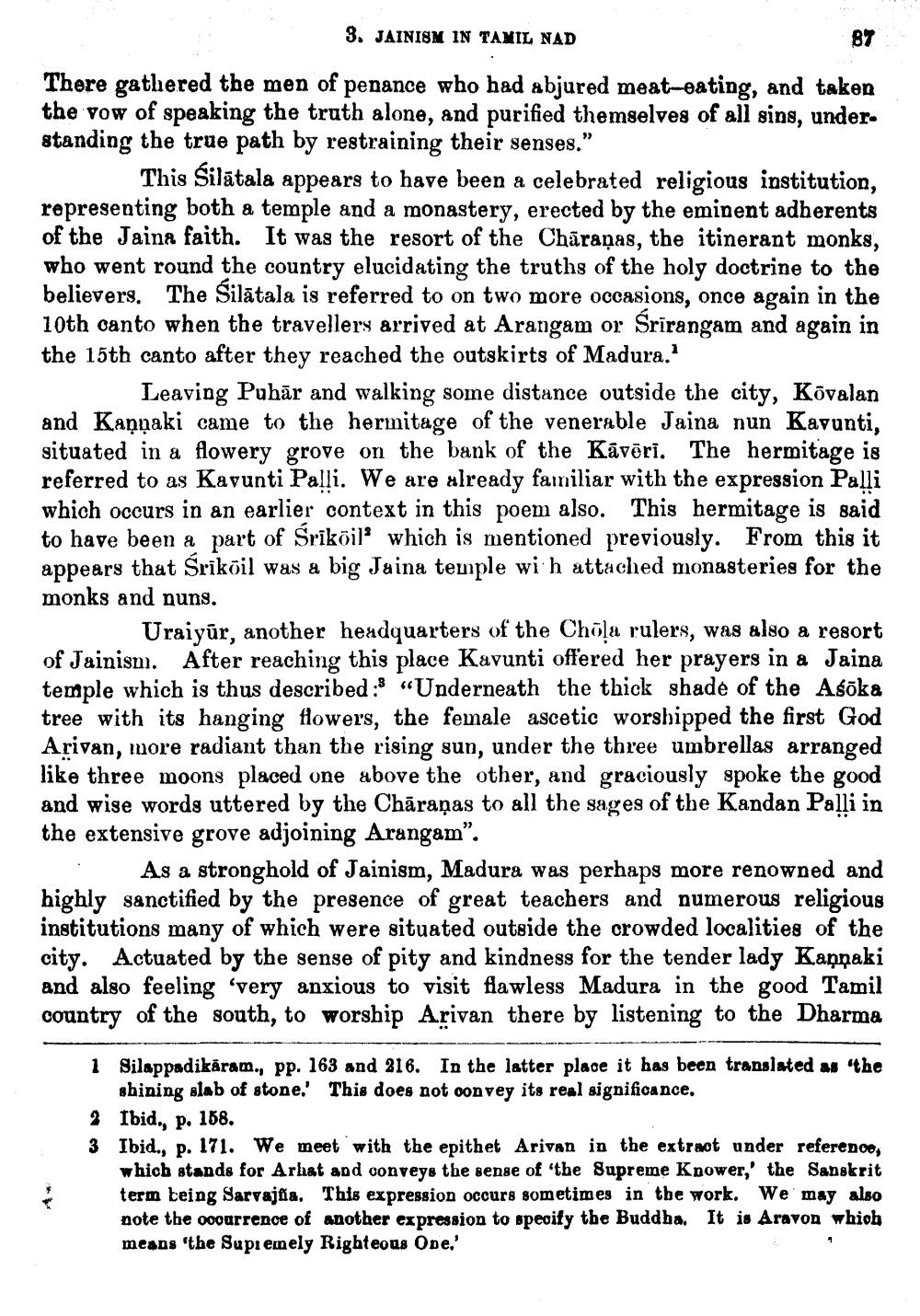________________
3. JAINISM IN TAMIL NAD
87 There gathered the men of penance who had abjured meat-eating, and taken the vow of speaking the truth alone, and purified themselves of all sins, under. standing the true path by restraining their senses."
This Silātala appears to have been a celebrated religious institution, representing both a temple and a monastery, erected by the eminent adherents of the Jaina faith. It was the resort of the Chāraņas, the itinerant monks, who went round the country elucidating the truths of the holy doctrine to the believers. The Silātala is referred to on two more occasions, once again in the 10th canto when the travellers arrived at Arangam or Srirangam and again in the 15th canto after they reached the outskirts of Madura."
Leaving Pubār and walking some distance outside the city, Kõvalan and Kannaki came to the hermitage of the venerable Jaina nun Karunti, situated in a flowery grove on the bank of the Kāvēri. The hermitage is referred to as Kavunti Palli. We are already familiar with the expression Palli which occurs in an earlier context in this poem also. This hermitage is said to have been a part of Sriköil' which is mentioned previously. From this it appears that Sriköil was a big Jaina temple wi h attached monasteries for the monks and nuns.
Uraiyūr, another headquarters of the Chūļa rulers, was also a resort of Jainism. After reaching this place Kavunti offered her prayers in a Jaina temple which is thus described :8 “Underneath the thick shade of the Asöka tree with its hanging flowers, the female ascetic worshipped the first God Arivan, more radiant than the rising sun, under the three umbrellas arranged like three moons placed one above the other, and graciously spoke the good and wise words uttered by the Chāraņas to all the sages of the Kandan Palli in the extensive grove adjoining Arangam”.
As a stronghold of Jainism, Madura was perhaps more renowned and highly sanctified by the presence of great teachers and numerous religious institutions many of which were situated outside the crowded localities of the city. Actuated by the sense of pity and kindness for the tender lady Kaņnaki and also feeling 'very anxious to visit flawless Madura in the good Tamil country of the south, to worship Arivan there by listening to the Dharma
1 Silappadikāram., pp. 163 and 216. In the latter place it has been translated as "the
shining slab of stone.' This does not oonvey its real significance.
Ibid., p. 168. 3 Ibid., p. 171. We meet with the epithet Arivan in the extract under reference,
which stands for Arhat and conveys the sense of the Supreme Kpower,' the Sanskrit term being Sarvajia. This expression occurs sometimes in the work. We may also note the ooourrence of another expression to speoity the Buddha. It is Aravon which means 'the Supremely Righteous Ope,'




